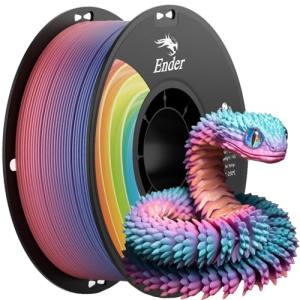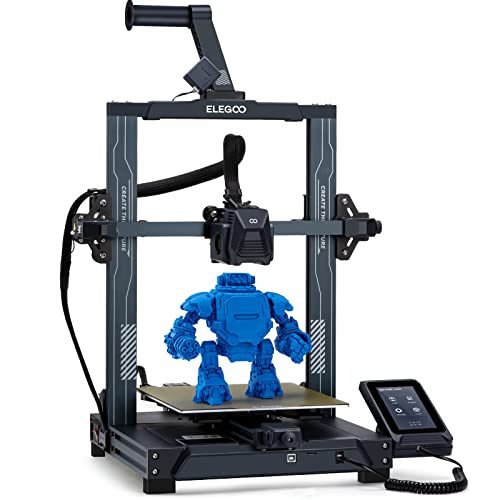SLA printers are a fantastic option if you're looking to create highly detailed and smooth models. The main thing that sets them apart is the use of liquid resin, which hardens when exposed to a light source, usually a laser or UV light. This process allows for incredible detail, making SLA printers perfect for jewelry, miniatures, or any projects where precision is key.
One big perk of SLA printers is their layer resolution. They can produce thinner layers than most FDM printers. This means those intricate details really shine through. It’s like comparing a fine painting to a kid’s crayon drawing. If that detail matters to you in your projects, SLA might be the way to go.
However, it’s not all smooth sailing with SLA. Resins can get pretty expensive, and the printing process can take a bit longer than FDM. Plus, you’ve got to deal with post-processing. After printing, models usually need to be cleaned and cured, which adds some time to your workflow. It’s something to consider if you’re planning to crank out a lot of parts.
In the SLA vs FDM 3D Printers debate, it really comes down to what you need. If your project demands high detail and you’re okay with the extra steps involved, SLA is awesome. But if you want speed and ease, you might want to stick with FDM. Think about your projects and what fits best for you!
FDM Printers The Basics Explained
So, let’s dive into FDM printers! FDM stands for Fused Deposition Modeling, and it’s one of the most popular types of 3D printing out there. These printers work by melting plastic filament and layering it to create your desired shape. You can think of it as building a sculpture one layer at a time. It’s like frosting a cake, but instead of icing, you’re using melted plastic!
What makes FDM printers so appealing? First off, they’re generally more affordable than other 3D printing methods, like SLA. If you’re just starting out or don’t want to break the bank, FDM printers are the way to go. They’re also pretty user-friendly, which means you won’t need a degree in engineering to get started. Most models come with straightforward software, making it easy to design and print whatever you have in mind.
Another cool thing about FDM printers is the variety of materials you can use. From PLA, which is great for beginners, to more advanced filaments like ABS or PETG, there’s a wide range of options depending on what you’re printing. Just be sure to choose the right filament for your project since each type has different properties like strength or flexibility.
Now, while FDM printers have lots of advantages, they also have some drawbacks. The print quality can be a bit rough compared to SLA printers, especially when it comes to intricate details. That’s something to think about when you’re considering the SLA vs FDM 3D Printers debate. Depending on what you want to create, that might steer your decision!
Rainbow PLA+ Filament for 3D Printers 1kg
Vibrant colors and strong performance for all your 3D printing projects
Product information
$25.99 $21.99
Product Review Score
4.42 out of 5 stars
102 reviewsProduct links
Key Differences Between SLA and FDM
When diving into the world of 3D printing, one of the biggest debates is SLA vs FDM 3D Printers. Each technology has its own strengths and weaknesses that make them better suited for different projects. Knowing these key differences can help you make the right choice for your needs.
SLA printers use a liquid resin that's cured layer by layer with a UV light. This method allows for incredible detail and smooth surfaces. If you're looking to create intricate designs or prototypes that need to be visually perfect, SLA is your friend. It’s often used in jewelry making, dental models, and figurines. Just be aware, the resin has a stronger smell and can be a bit messier to work with.
On the flip side, FDM printers work with filaments, melting plastic plastic and laying it down layer by layer. They're usually easier to use, and materials like PLA or ABS are widely available and affordable. FDM is often the go-to for creating functional parts, toys, or larger items. If you want something sturdy, with less fuss, FDM is a solid choice.
Another big difference is the speed and cost. FDM printers tend to be quicker and more budget-friendly, making them great for hobbyists or anyone just starting out. In contrast, SLA printers can have a higher upfront cost and take longer for print jobs, but they shine when it comes to detail.
When comparing SLA vs FDM 3D Printers, think about what you'll be making. For stunning visuals and fine details, SLA is hard to beat. But if you prioritize ease of use, durability, and cost-effectiveness, FDM is likely your best bet. Each has its perks, so pick the one that fits your project goals best!
Creality 405nm UV Curing Resin for LCD Printers
Get smooth, high-detail prints with this easy-to-use UV curing resin designed specifically for LCD printers
Product information
$14.99
Product Review Score
4.24 out of 5 stars
100 reviewsProduct links
Which Printer Fits Your Project Best
When diving into the world of 3D printing, knowing which type of printer fits your project is super important. The choice often comes down to SLA vs FDM 3D Printers, and each has its strengths for different jobs.
If you’re looking for high-detail prints, SLA printers shine here. They use liquid resin cured by a laser, which results in incredibly fine details and smooth finishes. This makes them a fantastic choice for miniatures, jewelry, or anything where precision matters. But keep in mind, the setup can be more complex, and the resin can be a bit messy.
On the other hand, FDM printers are user-friendly and great for prototyping. They melt plastic filament to create layers, which is perfect for larger models or functional parts. You can also find a huge array of materials for FDM printing, including some that are flexible or even infused with metal. Plus, the print process is usually quicker, making it easier to get your designs off the ground.
Your project’s needs will drive your choice between these two technologies. Think about the level of detail you want, how quickly you need results, and the kind of materials you’d like to use. Whether you lean towards SLA vs FDM 3D Printers really comes down to what you plan to create. Pick what aligns best with your goals, and you’re on your way to great prints!





